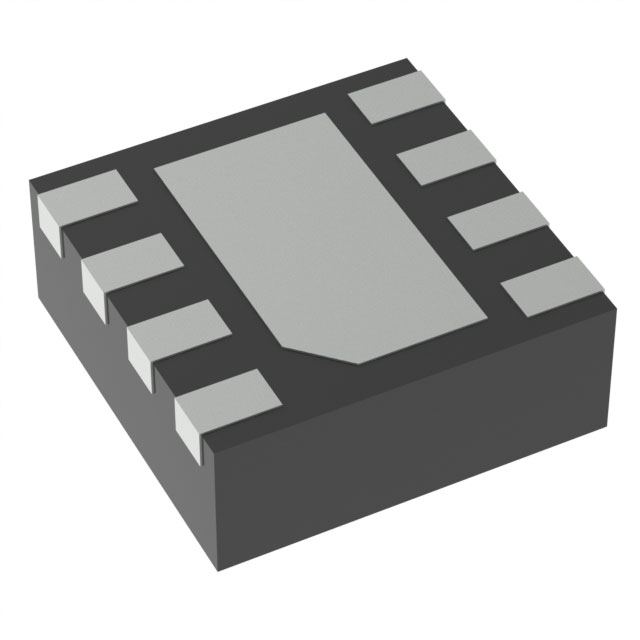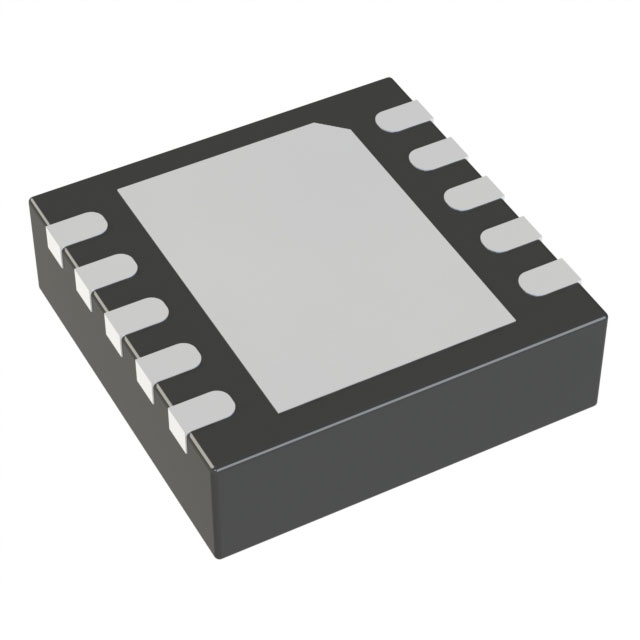

Introduction to L1154F Battery Equivalent
Catalog
What is L1154F Battery Equivalent?The battery for the 1154 model is the LR44L1154F Battery Equivalent ApplicationsComparison with LR44, AG13L1154 Battery Advantages:Frequently Asked QuestionsIn ConclusionRelated ArticlesThe LR1154 button battery is made from alkaline material, with a standard voltage of 1.5V and a capacity of 160mAh. It measures 11.6mm x 5.4mm and is commonly found in many electronic devices. This battery is ROHS certified, meaning it’s safe and eco-friendly. Plus, it has also received ROHS product certification, which shows it's well-recognized in the market and proves its safety.
When it comes to identifying button battery models, the Japanese LR1154 has a unique marking system. It features an "L" followed by three or four numbers. The first three numbers indicate the battery's diameter (in millimeters, rounded to an integer), while the last two represent one-tenth of the battery's height (also in millimeters). So, for example, if the LR1154 has a diameter of 11.6 mm and a height of 5.4 mm, the diameter mark would be "11" and the height mark would be "5.4." This coding method is super handy and helps us pick the right button batteries for different needs.
What is L1154F Battery Equivalent?
The L1154F Battery Equivalent is a 1.5-volt alkaline button cell battery that’s commonly used in things like laser pointers, watches, kids' books, calculators, and medical devices. It’s a small, round battery that measures 11.6mm (about 0.457 inch) in diameter and 5.4mm (around 0.21 inch) thick. This alkaline battery uses manganese dioxide and zinc to create a chemical reaction, making it a budget-friendly choice compared to silver oxide batteries, which have excellent capacity and long life.

What is L1154F Battery Equivalent?
Keep in mind that this is a primary cell battery, so it can’t be recharged. But it does offer a long-lasting life and provides a steady power source for your devices. Plus, it works well in both low and high temperatures.
The battery for the 1154 model is the LR44
LR44 is actually the same as the L1154 and AG13. Different manufacturers give batteries different names to help distinguish their quality. Since various countries have their own names for button batteries, it’s good to know that the standards are pretty much the same. In button batteries, LR means it's an alkaline type, where the positive electrode is manganese dioxide, the negative is zinc, and the electrolyte is potassium hydroxide, with a standard voltage of 1.5V. Both the L1154 and LR44 run at 1.5V, so you can use them interchangeably.
Battery Specifications:
- Nominal Voltage: 1.5V
- Chemistry: Alkaline
- Height: 5.4 mm
- Diameter: 11.6 mm
- UPC: 039800049223
L1154F Battery Equivalent Applications
This alkaline button cell battery is commonly used in:
- Watches
- Clocks
- Calculators
- Cameras
- Digital cameras
- PDAs
- Remote controls
- Camcorders
- Electronic games
- Electronic instruments
- MP3 players
- Digital voice recorders
- Children’s toys
- Blood glucose and cholesterol testing meters
- Various other electronic products
Comparison with LR44, AG13
| Specification | L1154 | LR44 | AG13 |
| Type | Alkaline button cell | Alkaline button cell | Alkaline button cell |
| Nominal Voltage | 1.5 V | 1.5 V | 1.5 V |
| Capacity | ~150 mAh | ~150-175 mAh | ~150-175 mAh |
| Dimensions | 11.6 mm diameter x 4.2 mm height | 11.6 mm diameter x 5.4 mm height | 11.6 mm diameter x 5.4 mm height |
| Weight | ~1.8 g | ~2.4 g | ~2.4 g |
| Chemical System | Alkaline manganese dioxide | Alkaline manganese dioxide | Alkaline manganese dioxide |
| Typical Applications | Watches, calculators, small electronic devices | Watches, calculators, small electronic devices | Watches, calculators, small electronic devices |
| Operating Temperature Range | -20°C to 60°C | -20°C to 60°C | -20°C to 60°C |
| Shelf Life | Up to 3-5 years | Up to 3-5 years | Up to 3-5 years |
| Leakage Resistance | Designed to be leak-resistant | Designed to be leak-resistant | Designed to be leak-resistant |
Key Differences:
Size: While the LR44 and AG13 have the same diameter as the L1154, they are a bit longer. This extra length could affect compatibility with some devices.
Weight: The LR44 and AG13 are heavier than the L1154, which might impact how the battery fits in the compartment.
Capacity: There can be small variations in capacity depending on the specific brand and model, even if the nominal capacities seem similar.
L1154 Battery Advantages:
- Compact size
- High energy density
- Stable voltage output
- Long shelf life
- Low self-discharge rate
- Wide temperature range
- Affordable
- Readily available
- Versatile usage
- Reliable performance
- Durable
- Low leakage
- Easy to replace
- Environmentally friendly
- Improved safety features
Frequently Asked Questions
What battery is compatible with L1154F?
If your device uses any of the following batteries, this is what you need: LR44, CR44, SR44, 357, SR44W, AG13, G13, A76, A-76, PX76, 675, 1166a, LR44H, V13GA, GP76A, L1154, RW82B, EPX76, SR44SW, 303, SR44, S303, S357, SP303, SR44SW, and L1154F.
Is L1154F the same as 357?
The LR44 (also known as A76, PX76A, L1154, and AG13) is an alkaline battery with a capacity of about 150 mAh. The 357 (sometimes called SR44) is a silver oxide battery.
Is the Speedmaster LR44 button battery the same as the L1154 battery?
There are some differences between the LR44 and L1154 batteries, but they share similarities too. Both are 1.5V alkaline button batteries. However, LR44 is a silver oxide battery, with silver oxide as the positive electrode, zinc powder as the negative, and potassium hydroxide or sodium hydroxide as the electrolyte. The L1154F is a lithium manganese button battery, with manganese dioxide as the positive and lithium metal as the negative. If used properly, the two can be interchangeable, but it’s best to buy the correct model to avoid issues.
What does "F" mean in an L1154F battery?
The "F" at the end of the battery code means that the battery is flat.
What is a button battery?
A button battery is what we commonly call a button cell; it’s shaped like a button on our clothes, usually with a larger diameter and thinner thickness. Compared to a cylindrical AA battery, button batteries are flat and wide. Besides button batteries, we also have cylindrical, square, and shaped batteries.
Why do button batteries leak?
There are three main reasons: First, if the current is too strong, the battery can overheat and leak. Even a small current can cause seepage over time. Second, the materials in the battery can react chemically, leading to leaks. Lastly, if old batteries aren’t removed promptly, they can also leak.
Can battery leakage in a romo for half a month be toxic?
Generally, if there are no symptoms, there shouldn’t be much to worry about. The organic solvents from battery leakage evaporate, usually within a few days. So, don’t stress too much; just keep an eye on things. It typically doesn’t cause chronic mercury poisoning.
Is battery discharge toxic?
Yes, battery discharge can contain toxic substances. Effects on people may include skin burns, eye irritation, respiratory damage, digestive issues, and poisoning.
Skin burns: The battery liquid is corrosive, which can cause burns upon contact.
Eye irritation: The liquid can irritate the eyes, leading to pain, redness, and tearing.
Respiratory damage: Vapors from the battery can irritate the respiratory tract, causing sore throat, cough, and asthma symptoms.
Digestive damage: Ingesting battery liquid can lead to mouth, throat, and stomach pain, nausea, and vomiting.
Poisoning: Battery liquid may contain heavy metals that can cause poisoning symptoms like headaches, dizziness, fatigue, and loss of appetite after long-term exposure or ingestion.
In everyday life, you should avoid direct contact with leaking battery liquid. If you do get exposed, make sure to wash the affected area right away with soap and water. If you notice any unusual symptoms, head to the hospital for treatment as soon as possible.
In Conclusion
After reading this article, I hope you now have a better understanding of the L1154F battery—its definition, characteristics, and applications. We’ve also touched on the issue of button battery leakage and some related science. Thank you for reading, and we’ll see you next time!
Related Articles
CR2016 vs. CR2032: Are CR2016 and CR2032 the Same?
Subscribe to JMBom Electronics !












